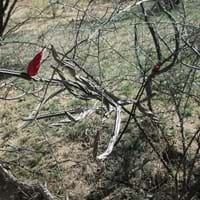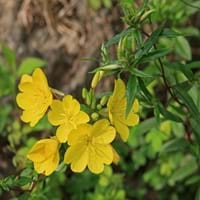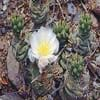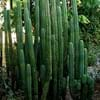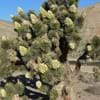Life Span
Perennial
Perennial
Type
Flowering Plants
Perennial
Origin
Mexico, Caribbean, Central America
Northeastern United States, Mid-Atlantic United States, Southeastern United States, North-Central United States, Central United States, South-Central United States
Types
not available
Apricot Delight, Copper canyon
Number of Varieties
Not Available
Habitat
Desert
Roadsides, sand dunes, Waste areas
USDA Hardiness Zone
12-15
5-8
Sunset Zone
H2
1a, 1b, 2a, 2b, 3a, 3b, 4, 5, 6, 7, 8, 9, 10, 11, 12, 13, 14, 15, 16, 17, 18, 19, 20, 21, 22, 23, 24
Habit
Weeping
Clump-Forming
Flower Color
White, Ivory
Yellow
Flower Color Modifier
Not Available
Bicolor
Fruit Color
Non Fruiting Plant
Tan
Leaf Color in Spring
Green, Dark Green
Green
Leaf Color in Summer
Green, Dark Green
Green
Leaf Color in Fall
Green, Dark Green
Green
Leaf Color in Winter
Olive, Dark Green
Light Green
Leaf Shape
Long and slender with very sharp edges
Oblong
Plant Season
Summer
Summer
Sunlight
Partial shade
Full Sun, Partial Sun
Type of Soil
Sand
Loam, Sand
The pH of Soil
Neutral, Alkaline
Acidic, Neutral, Alkaline
Soil Drainage
Well drained
Well drained
Bloom Time
Early Summer, Summer
Early Summer, Summer, Late Summer
Tolerances
Drought
Variety of soil types
Where to Plant?
Container, Ground
Container, Ground, Pot
How to Plant?
Grafting, Seedlings, Transplanting
Divison, Seedlings, Stem Planting
Plant Maintenance
Medium
Low
Watering Requirements
Does not require lot of watering, Water once every two or three weeks, Water when soil is dry
Average Water Needs, Do Not over Water, Never Over-water, Requires regular watering, Water more in summer
In Summer
Lots of watering
Lots of watering
In Spring
Moderate
Moderate
In Winter
Average Water
Average Water
Soil pH
Neutral, Alkaline
Acidic, Neutral, Alkaline
Soil Type
Sand
Loam, Sand
Soil Drainage Capacity
Well drained
Well drained
Sun Exposure
Partial shade
Full Sun, Partial Sun
Pruning
Remove damaged leaves, Remove dead branches, Remove dead leaves
Remove damaged leaves, Remove dead branches, Remove dead leaves, Remove dead or diseased plant parts
Fertilizers
All-Purpose Liquid Fertilizer
All-Purpose Liquid Fertilizer, fertilize in growing season
Pests and Diseases
Aphids, Mealybugs, Root rot, Scale, Viruses
Slugs, Snails
Plant Tolerance
Drought
Variety of soil types
Flower Petal Number
Semi-Double
Single
Foliage Texture
Bold
Fine
Foliage Sheen
Not Available
Matte
Attracts
Not Available
Insects
Allergy
Not Available
Abdominal pain, Constipation, Diarrhea, Skin irritation
Aesthetic Uses
Beautification
Beautification, Borders, Landscape Designing, Showy Purposes
Beauty Benefits
Not Available
Good for skin, Making cosmetics, Stops hair loss
Environmental Uses
Air purification
Air purification, Food for insects, Versatility
Medicinal Uses
Diabetes, Hangover
Eczema
Part of Plant Used
Flowers, Fruits, Leaves
Root
Other Uses
Employed in herbal medicine, Fine spines and trichomes are used as fiber for weaving, Used As Food
Decoration Purposes, Medicinal oil, Showy Purposes, Used as Ornamental plant, Used for its medicinal properties
Used As Indoor Plant
No
Yes
Used As Outdoor Plant
Yes
Yes
Garden Design
Container, Hanging Basket, Houseplant, Tropical
Edging, Feature Plant, Groundcover, Mixed Border
Botanical Name
Peniocereus greggii
OENOTHERA 'Cold Crick'
Common Name
Night Blooming Cereus, Reina de la noche, Arizona queen of the night
Suncups, sundrops
In Hindi
Night Blooming Cereus
Evening Primrose
In German
Nachtblühende Cereus
Evening Primrose
In French
Night Blooming Cereus
onagre
In Spanish
Reina de la noche
onagra
In Greek
Night Blooming Cereus
Νυχτολούλουδο
In Portuguese
Night Blooming Cereus
Evening Primrose
In Polish
Noc Blooming Cereus
wiesiołka
In Latin
Maria Maria Cereus
vespere Primrose
Phylum
Magnoliophyta
Magnoliophyta
Class
Magnoliopsida
Magnoliopsida
Order
Caryophyllales
Myrtales
Family
Cactaceae
Onagraceae
Genus
Peniocereus
Oenothera
Clade
Angiosperms, Core eudicots, Eudicots
Angiosperms, Eudicots, Rosids
Tribe
Pachycereeae
Onagreae
Subfamily
Cactoideae
Onagroideae
Season and Care of Night Blooming Cereus and Evening Primrose
Season and care of Night Blooming Cereus and Evening Primrose is important to know. While considering everything about Night Blooming Cereus and Evening Primrose Care, growing season is an essential factor. Night Blooming Cereus season is Summer and Evening Primrose season is Summer. The type of soil for Night Blooming Cereus is Sand and for Evening Primrose is Loam, Sand while the PH of soil for Night Blooming Cereus is Neutral, Alkaline and for Evening Primrose is Acidic, Neutral, Alkaline.
Night Blooming Cereus and Evening Primrose Physical Information
Night Blooming Cereus and Evening Primrose physical information is very important for comparison. Night Blooming Cereus height is 180.00 cm and width 90.00 cm whereas Evening Primrose height is 1.00 cm and width 0.10 cm. The color specification of Night Blooming Cereus and Evening Primrose are as follows:
Night Blooming Cereus flower color: White and Ivory
Night Blooming Cereus leaf color: Green and Dark Green
Evening Primrose flower color: Yellow
- Evening Primrose leaf color: Green
Care of Night Blooming Cereus and Evening Primrose
Care of Night Blooming Cereus and Evening Primrose include pruning, fertilizers, watering etc. Night Blooming Cereus pruning is done Remove damaged leaves, Remove dead branches and Remove dead leaves and Evening Primrose pruning is done Remove damaged leaves, Remove dead branches, Remove dead leaves and Remove dead or diseased plant parts. In summer Night Blooming Cereus needs Lots of watering and in winter, it needs Average Water. Whereas, in summer Evening Primrose needs Lots of watering and in winter, it needs Average Water.
